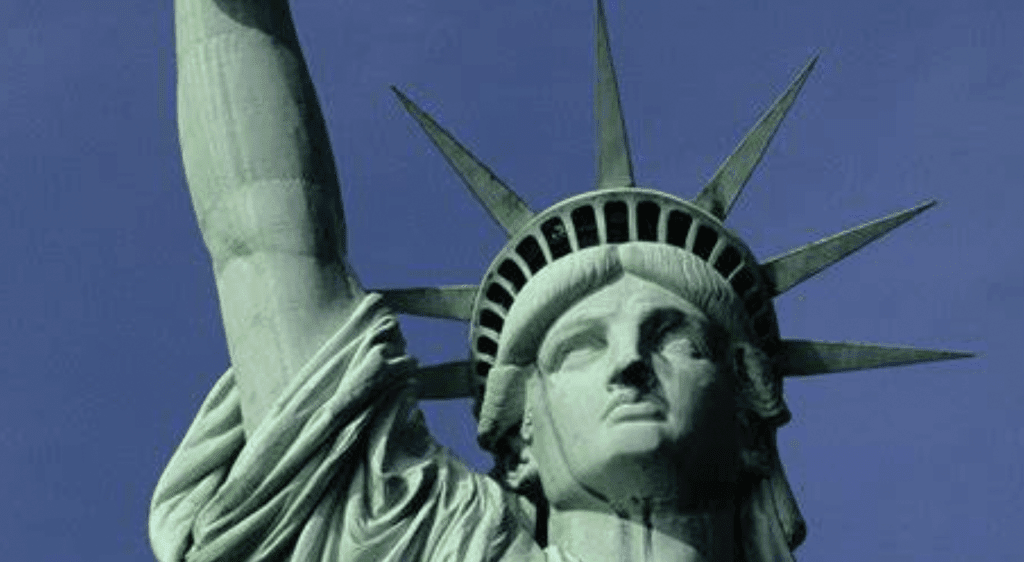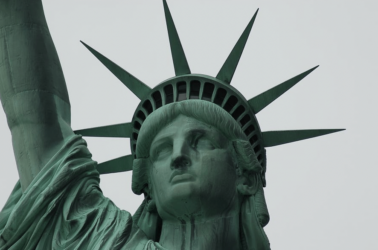The Statue of Liberty turning green due to oxidation. This statue was not green from the beginning, its color was reddish brown when it was revealed to the public but with the passage of time, its color has changed as a result of chemical reactions taking place. This statue was gifted by the people of France to the U.S. and is represented as the symbol of good relations (hope and freedom) between them. It was brought from France to the U.S. in 35 pieces which were then joined together.
During covid-19, tourists were not allowed to visit this statue. But on Oct 11, it was opened again for the tourists. In this article, we have discussed the facts about this statue and the reasons Why is the Statue of Liberty turning green?
What does the Statue of Liberty represent?
The height of the statue was 300 feet tall from the ground level to the torch. It was gifted in 1886. This statue is the symbol of universal freedom. It was gifted by the people of France to America. It is considered the symbol of freedom, justice, and hope.
Why is the Statue of Liberty turning green?
As we have discussed above that the color of this statue is changing with the passage of time but everyone wants to know the reason of this change. Following are the reasons why this statue is turning green:
- Restoration
- Effect of acid rain
- Natural weathering
- Oxidation
Natural weathering:
Natural weathering includes different conditions like acid rain, oxidation, and other chemical reactions that affect the color and shine of historical buildings and the Statue of Liberty.
Oxidation:
Oxidation is the process that takes place when oxygen is combined chemically with any element. Due to oxidation, the shiny surface of copper coating has been converted to dark brown coating from the exterior, this dark brown mineral coating is called tenorite. When sulphuric acid present in air reacts with the tenorite and oxidized copper coating then it changes to green color.
Restoration:
In 1986, the Statue of Liberty faced extensive restoration which is a cause of change in its color. John Robbins is known for the historic architecture as he is the leader of the workers who restore the statue.
Acid rain:
Acid rain also has an impact on the color of the liberty statue. Acid rain reacts with the oxidized copper and results in a change in color from dark brown to green. We know that acid rain affects buildings, and the color of the Taj Mahal has also changed as a result of acid rain.
What is the green stuff on the Statue of Liberty called?
The green stuff on the statue is called patina which protects the copper coating from further damage due to oxidation. Patina is a crystalline structure that’s why it protects the statue. While paint is opaque that’s why it deteriorates with time.
Statue of Liberty facts:
Following are some fantastic facts about this statue:
- There are seven rays on the crown of the statue that represents the seven seas of the world.
- There are 354 windows in the crown of the statue, the visitors can reach these windows after climbing 354 steps.
- Its height is 151 feet 1 inch (46 meters) and it was the tallest model in the U.S. at that time.
- 300 coin-thin copper sheets were used to cover the statue, these sheets were joined together and converted into different shapes according to the requirement.
- The length of the arm with the torch is 46 feet (14 meters), the finger is 8 feet (2.4 meters) and the nose is nearly 5 feet (1.5 meters).
Statue of Liberty height:
The Statue of Liberty’s height is 93 meters.
History of the Statue of Liberty:

The history of the Statue of Liberty begins with its conception as a symbol of friendship and freedom between France and the United States. Here is a detailed overview of its history:
Concept and Design:
The idea for a monument to celebrate the American Revolution and the friendship between France and the United States was initiated by Édouard René de Laboulaye, a French political thinker and abolitionist. French sculptor Frédéric Auguste Bartholdi was commissioned to design the statue, and Alexandre Gustave Eiffel (known for designing the Eiffel Tower) contributed to the structural design.
Fundraising:
To finance the construction of the statue, funds were raised through various means. In the United States, a fundraising campaign was led by publisher Joseph Pulitzer, who used his newspaper, The New York World, to appeal for public donations. The fundraising efforts in both countries were successful, with contributions from thousands of individuals.
Construction:
The construction of the statue took place in France. Bartholdi oversaw the creation of the copper sheets that would form the statue’s exterior, while Eiffel designed the internal framework. The statue was constructed in sections and then disassembled for transportation.
Arrival in the United States:
The disassembled statue arrived in New York Harbor on June 17, 1885, aboard the French frigate “Isère.” The statue’s arrival generated significant excitement and anticipation among the American public.
Pedestal Construction:
The pedestal on which the statue stands was designed by American architect Richard Morris Hunt. The pedestal construction faced some challenges, including fundraising difficulties and the need to strengthen the structure to support the statue’s weight.
Assembly and Dedication:
Once the pedestal was completed, the statue was reassembled on Bedloe’s Island (now known as Liberty Island). On October 28, 1886, the Statue of Liberty was officially dedicated in a ceremony attended by thousands of people, including French and American dignitaries.
Historical Significance:
The Statue of Liberty quickly became a symbol of hope, freedom, and opportunity for immigrants arriving in the United States. It greeted millions of immigrants passing through nearby Ellis Island, serving as an iconic landmark of the nation’s welcoming spirit.
Preservation and Restoration:
Over the years, the statue faced challenges such as weathering, deterioration, and damage. Several restoration projects were undertaken to preserve and maintain its condition, including a major restoration effort for its centennial celebration in 1986.
Today, the Statue of Liberty stands as a prominent symbol of freedom and democracy, visited by millions of tourists from around the world. Its historical significance, architectural grandeur, and association with immigration have made it an enduring and iconic monument.




 9 Steps to Advance Your Career As an RN
9 Steps to Advance Your Career As an RN